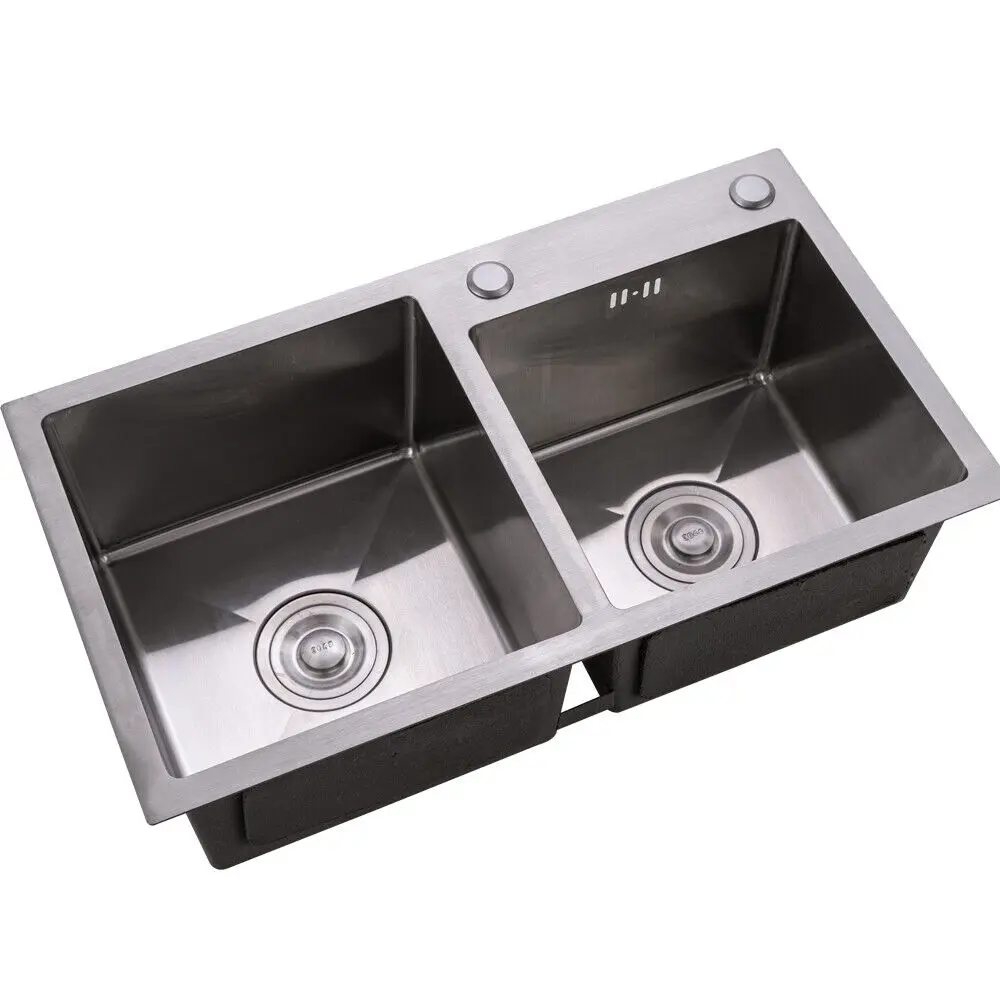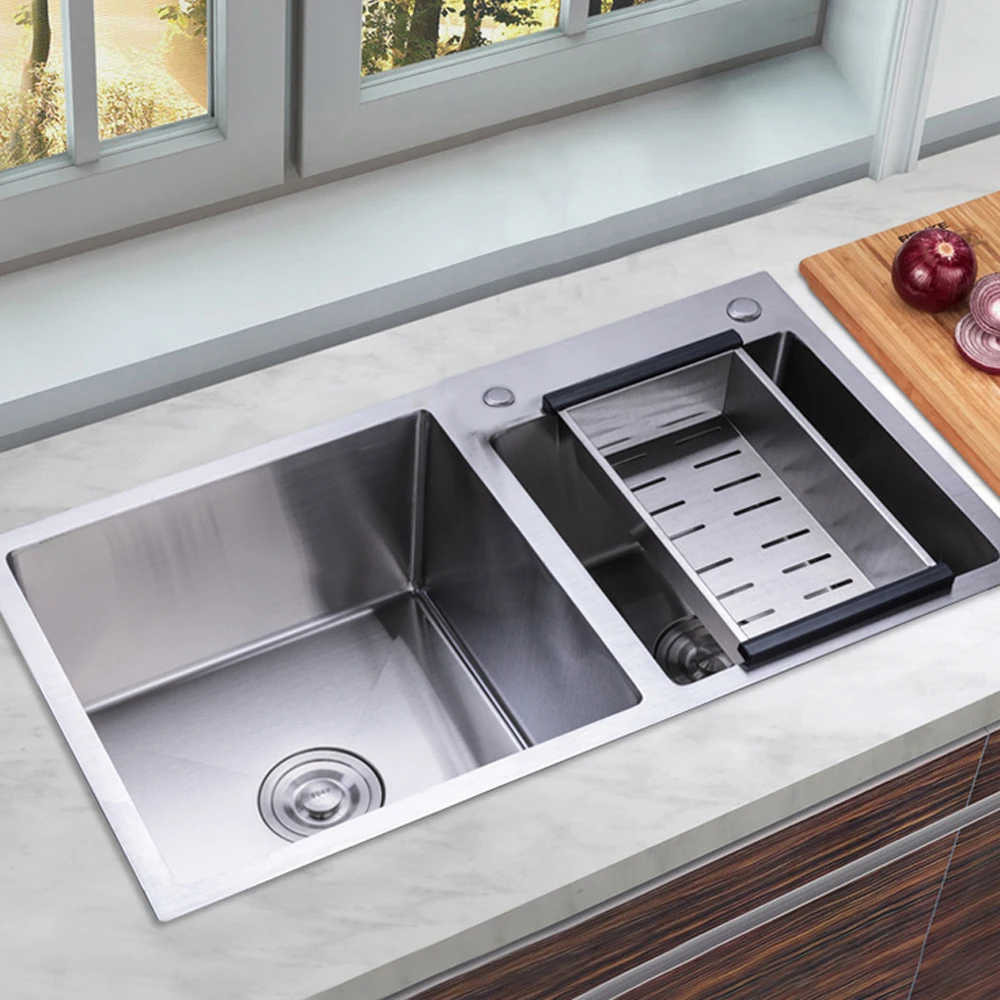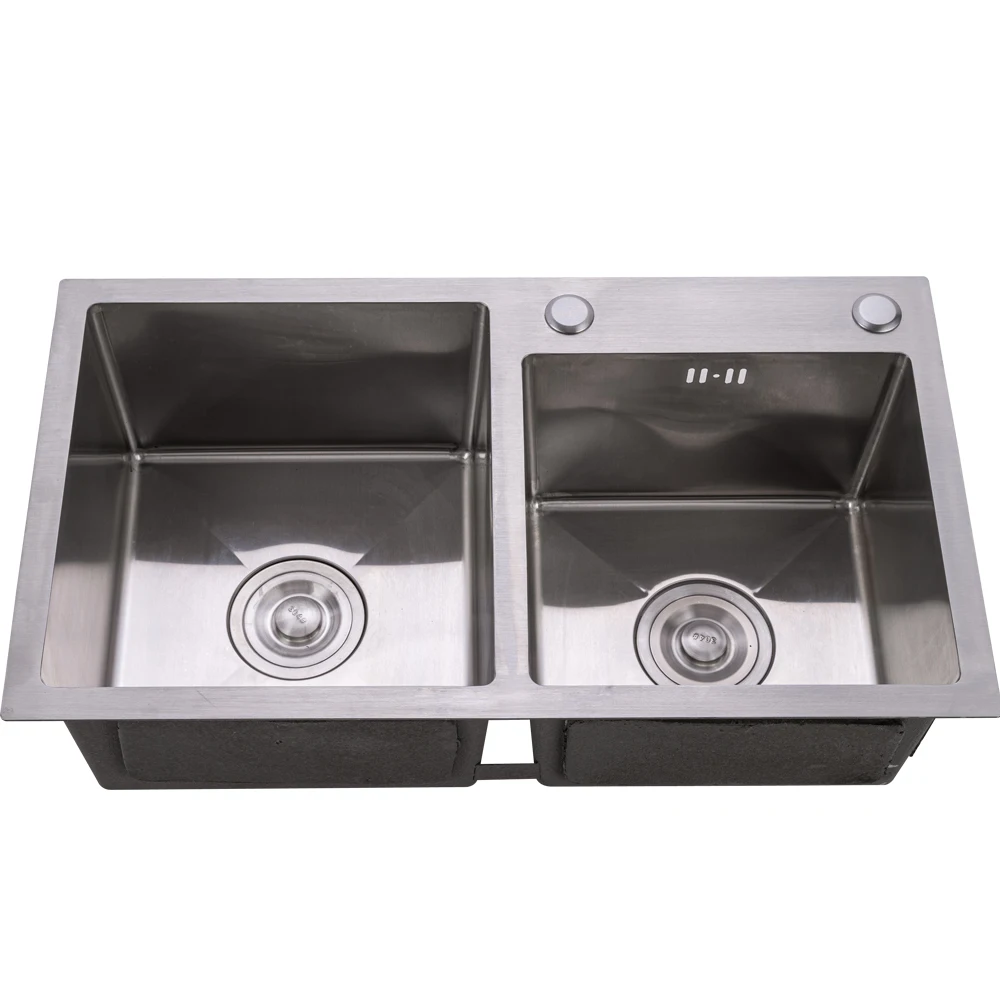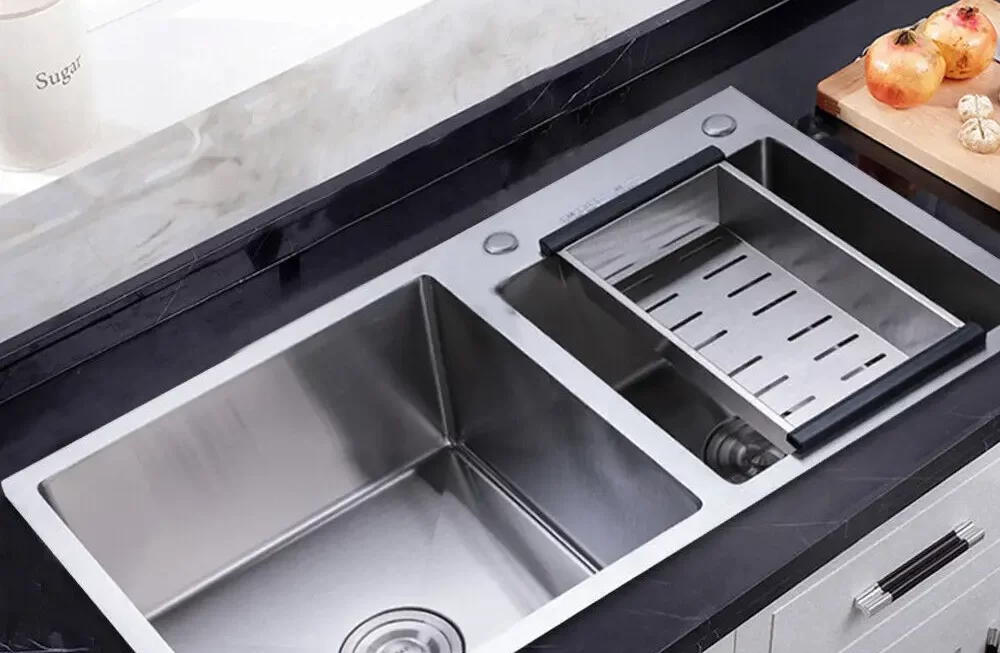Introduction to Double Kitchen Sink Clogs
Encountering a clog in a double kitchen sink can be a troubling issue. Often, the inconvenience strikes without warning, leaving homeowners puzzled about the next steps. Double kitchen sinks, due to their design, require distinct approaches for unclogging compared to single sinks. So how to unclog a double kitchen sink?

When approaching how to unclog a double kitchen sink, one must consider if there is a garbage disposal unit involved. The presence or absence of this appliance changes the dynamics of the unclogging process. It is crucial to understand that what works for one side might not be suitable for the other.
In the following sections, we will guide you through a series of steps adapted for each scenario — with or without a garbage disposal. Our goal is to provide you with efficient and safe methods to clear the obstruction, as well as preventative practices to avoid future complications.
As we delve into the precise instructions, remember that patience and care are vital. With the right tools and techniques, you’ll be well-equipped to restore the function of your double kitchen sink.
Initial Steps to Unclogging a Double Kitchen Sink
Clogs can be a nuisance, but with the right approach, they can also be a manageable home maintenance task. Before attempting to unclog your double kitchen sink, it’s important to take some preparatory steps to ensure you’re set up for success. This includes gathering all necessary tools so that you’re not in the middle of the process only to find you’re missing something critical. Let’s start by identifying what you’ll need to tackle this issue.
Gather Necessary Tools
To unclog your double kitchen sink efficiently, you need to have the right tools on hand.
Here’s a list to get you started:
- Rubber gloves – Keep your hands clean and safe from debris.
- Sink plunger – A flat plunger is necessary, not a toilet plunger.
- Petroleum jelly – This aids in sealing the plunger.
- Sink stopper or rag – Use this to block the second sink or air gap.
- Bucket – Handy for collecting water that may need to be drained.
- Wrench (optional) – If you need to disassemble the piping.
- Baking soda and vinegar – For a natural cleaning approach.
Gathering these items before you begin will make the clog clearing process smoother. Use the tools wisely, and move on to the next steps with confidence.

Unclogging Without Garbage Disposal
Manual Removal of Obstructions
When you face a clog in a double kitchen sink without a garbage disposal, start with manual removal. Wear rubber gloves to protect your hands from dirt and debris. Remove the sink strainer and inspect the drain for obvious blockages. Scoop out any food scraps or foreign objects with your fingers or a tool like pliers. With this initial step, you might quickly clear the clog without needing further action. Always work carefully to avoid damaging your sink.
Plunger Method for Non-Disposal Side
If manual removal doesn’t fix the clog, use a sink plunger. First, fill the clogged sink with enough water to cover the plunger’s head. Apply petroleum jelly on the plunger’s rim to improve the seal. Firmly place the plunger over the clogged drain. Make sure the other sink is sealed with a stopper or a wet rag. Now, push the plunger up and down steadily about 10 to 12 times. This creates pressure that can dislodge the clog. Lift the plunger to see if water drains smoothly. If not, repeat the plunging process until the obstruction is cleared.
Unclogging With Garbage Disposal
Proper Use of Plunger with Disposal
If your double kitchen sink with a garbage disposal clogs, a plunger can help. Before plunging, turn off the disposal. This prevents accidents and damage. For a good seal, apply petroleum jelly around the plunger’s lip. Place it firmly over the disposal drain. Ensure the other sink is closed with a stopper. Fill the disposal side with water to cover the plunger cup. Pump the plunger forcefully, but hold it steady — at least ten good thrusts. Water should drain when you lift the plunger. If not, plunge several more times.
Preventing Air Gap Overflow
While unclogging with a plunger, watch out for the air gap. This is the small cylinder on the sink top near the faucet. Its job is to stop dirty water from flowing back into the dishwasher. If you have an air gap, water might spout out during plunging. To prevent messes, use a small C-clamp or a heavy rag to block it. Ask someone to hold the rag in place snugly while you work the plunger. This will keep water from shooting out and making a bigger problem.
Additional Methods for Tough Clogs
Sometimes, basic unclogging methods do not work. For tougher clogs, consider these additional measures.
Boiling Water Technique
The boiling water technique is simple yet effective. Here’s how to do it:
- Remove standing water: If your sink is filled with water, scoop it out first.
- Boil water: Heat a large pot of water until it boils.
- Pour carefully: Slowly pour the boiling water directly down the drain.
This can dissolve or loosen grease and soap buildup in the pipes. If the water flows freely after this, the clog is cleared. If not, you may need to repeat this process or try another method.

Natural Remedies: Vinegar and Baking Soda
For a non-toxic option, use vinegar and baking soda:
- Add baking soda: Pour a cup of baking soda down the clogged drain.
- Add vinegar: Follow with a cup of white vinegar.
- Wait and flush: Let the mixture sit for an hour. Then, flush with hot water.
This combination creates a foaming action that can help break up clogs.
The Mechanic’s Approach: Using a Drain Snake
If the clogs persist, a drain snake might be necessary. Here is how you can use one:
- Remove the trap: Take out the P-trap under the sink. Place a bucket underneath to catch any spillage.
- Insert the snake: Feed the drain snake into the pipe where the clog is suspected.
- Rotate and remove: Turn the snake’s handle to break up the clog. Pull it out slowly.
- Run hot water: After removing the snake, check the flow by running hot water.
This method is quite effective for deep and stubborn clogs. However, use caution to avoid pipe damage.
These steps can help you manage even the toughest kitchen sink clogs. If these methods fail, it may be time to consult a professional plumber.
Preventative Measures to Avoid Future Clogs
To prevent future clogs in your double kitchen sink, adopt certain best practices and maintenance routines. These tips not only prolong the life of your plumbing but also save on potential costly repairs.
Best Practices for Sink Use
- Avoid Solid Waste: Make a habit of scraping food remnants, grease, and solid waste into the trash or a compost bin, rather than your sink.
- Use Strainers: Employ mesh strainers over both drains. They catch debris that could potentially form clogs.
- Limit Garbage Disposal Use: Treat your garbage disposal with care. Reserve it for minor and biodegradable wastes only.
- Avoid Chemical Cleaners: Steer clear of chemical drain cleaners. They can harm pipes over time. Opt for natural alternatives when you need a quick fix.
Regular Cleaning and Maintenance
- Weekly Flushes: Once a week, flush your drains with boiling water. It can help dissolve any lingering fats or oils.
- Bi-weekly Vinegar Flushes: Every other week, pour a mixture of vinegar and baking soda down the sink. Let it sit for an hour, then flush with hot water. This not only clears early-stage clogs but also deodorizes your sink.
- Check Plumbing Joints: Every few months, inspect under your sink for leaks or weak joints. Tightening them can prevent water damage and clogs.
- Professional Inspection: Ideally, have a professional plumber inspect your kitchen plumbing annually. They can spot issues before they become severe.
By following these guidelines, you can keep your double kitchen sink operational and virtually clog-free. With consistent care and little caution, dealing with a blocked sink can become a rare inconvenience.
Conclusion: When to Call a Professional Plumber
Sometimes, despite your best efforts, a clog in your double kitchen sink may persist. When home remedies and do-it-yourself methods don’t work, it’s time to call a professional plumber. Look for these signs that indicate the need for expert help:
- Water Backs Up: If water starts backing up in your sink whenever you run the dishwasher or the other sink, this could mean a deeper problem.
- Bad Smells: Persistent bad odors, even after cleaning attempts, can point to a deeper clog.
- No Improvement: If you followed all steps correctly, but there’s no improvement, a plumber’s tools and expertise are needed.
- Slow Draining: If water drains, but too slowly despite repeated plunging and cleaning, you may have a build-up further down the line.
- Multiple Clogs: When more than one drain in your home is clogging, this could signal a main line issue. A pro will check and fix it.
Always remember, excessive force can damage pipes. Avoid harsh chemicals because they may harm your plumbing. With regular maintenance and careful use, you can prevent most clogs. However, if you find yourself facing a stubborn clog, don’t hesitate to seek professional services. Plumbers have the right tools and expertise to quickly resolve deep and stubborn clogs, saving you time and possibly preventing further damage.



